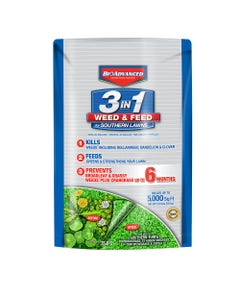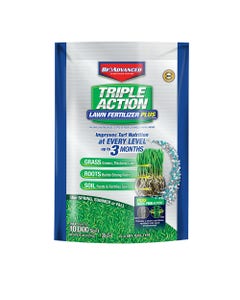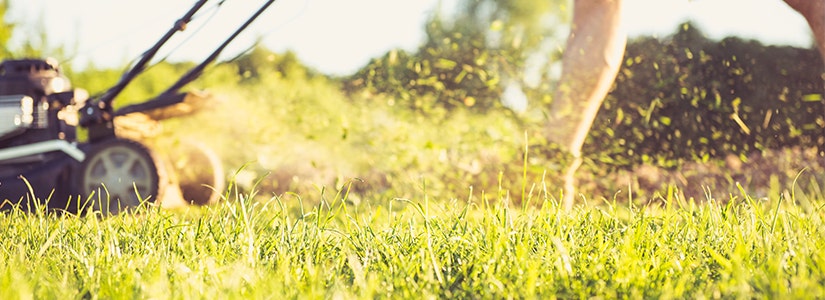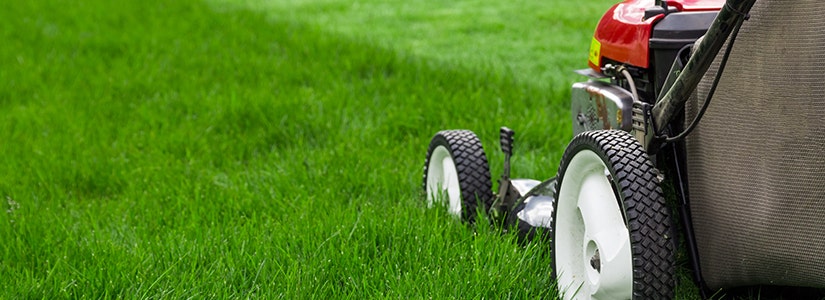

- Home
- Solution Center
- Learn
- Lawn and Landscape
- Getting Ready For Spring Lawn Care
Getting Ready For Spring Lawn Care
As your lawn responds to nature's spring wake-up call, help prepare it for a year of healthy growth with the lawn care it needs to help it thrive. By tackling a few simple chores, you will prepare your lawn to defend itself against this year's wave of weeds, diseases and drought.
Spring Lawn Care Steps
Rake
Spring raking removes lingering fall leaves and grass blades that did not survive winter. Left alone, these dead blades add to your lawn's thatch layer. Raking also loosens matted grass clumps caused by snow mold, which can smother new growth.
Use a spring-tine rake with a strong upward pull to remove dead grass. Rake when soil is not soft and muddy, or you risk pulling up healthy grass crowns.
Overseed
Fill bare or thin spots in the lawn by overseeding. Late spring is the best time to overseed warm-season grass. Fall is the ideal time for cool-season grass, but in colder regions, spot-seeding small areas in spring yields good results. When you overseed, apply a slow-release nitrogen fertilizer. Five weeks after overseeding, apply a quick-release nitrogen feed.
Learn about causes of bare spots in lawns, how to prevent them and how to treat them.
Aerate
Vital for a truly healthy lawn, aeration is the solution for compacted soil. How often you should aerate your lawn depends on soil type and how you use your lawn. Late spring to early summer is the right time to aerate warm-season grasses. Fall is the best time for cool-season types. But if you didn't get to it last fall, you can tackle it in early spring. Learn the secrets behind aerating; and how to aerate properly.
Dethatch
Spring is the right time to dethatch turf. Aim for early spring for cool-season grasses and late spring to early summer for warm-season grasses. Learn more about dethatching.
Weed
If Crabgrass is a problem in your lawn, apply pre-emergent herbicides to keep seeds that dropped last summer from germinating. Timing is critical for this application. Most product bags have application timing advice. Learn about application timing and tips for using pre-emergent herbicides.
Use post-emergent broadleaf herbicides for perennial and winter annual weeds in warm-season lawns. Treat or dig perennial weeds as they start appearing in cool-season lawns or try 5 In 1 Weed & Feed. It kills lawn weeds like Dandelion and Clover, pulls kills Crabgrass. Learn more about post-emergent herbicides.
Fertilize
Apply grass fertilizer for spring roughly three weeks after grass starts greening (that usually corresponds to the time following two or three mowings). Apply lawn fertilizer for spring too early and you risk feeding weeds and creating fertilizer runoff. Too-early applications also trigger lush blade growth at a time when roots may not have started their spring growth spurt.
Water
Spring irrigation needs vary by region. For mountain and arid desert areas, continue watering lawns as you have been through winter, increasing irrigation frequency as temperatures climb, as spring winds build in the Southwest, and if spring rainfall is scarce in mountain areas.
In the North, Midwest and Pacific Northwest areas, spring rains typically provide sufficient moisture for awakening lawns. Avoid the temptation to water as a means of greening up grass. Let it green up naturally and irrigate only if rains are scarce and grass shows signs of dehydration.
Learn how often to water your lawn.
Mow
Start mowing when the ground is dry enough and grass is long enough to require cutting. Cut at the proper height for your type of grass. Avoid mowing too low. Grass cut too short allows sunlight to reach soil, encouraging weed seeds to germinate. It also favors shallow root development, which makes the lawn more easily susceptible to drought stress. Brush up your skills by reviewing the rules of lawn mowing. Learn why you don't need to bag lawn clippings.














